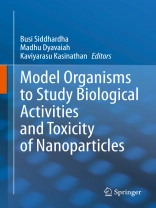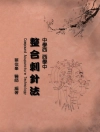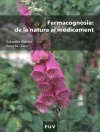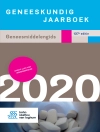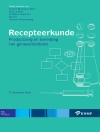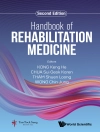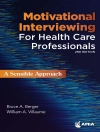This book provides a comprehensive overview of state-of-the-art applications of nanotechnology in biology and medicine, as well as model organisms that can help us understand the biological activity and associated toxicity of nanoparticles, and devise strategies to minimize toxicity and enhance therapies.
Thanks to their high surface-to-volume ratio, nanoparticles are characterized by excellent biocompatibility and bioavailability, a high therapeutic index, and relatively low toxicity, which has led to their widespread application in the early diagnosis of diseases, comprehensive monitoring of disease progression, and improved therapeutics.
The book also explores nanoparticle-based insecticides and their mechanisms of action, and provides a comparative analysis of the various model organisms that are used to understand the biological properties of nanoparticles. Further, it describes various in-vivo models that yield important insights into nanomaterial-mediated toxicity, promoting the optimal utilization of nanoparticles. In closing, the book discusses future perspectives and regulatory issues concerning the use of nanomaterials in translational research.
Table of Content
Chapter 1. Nanotechnology : Application in biology and medicine.- Chapter 2. Biological activities of nanoparticles and mechanism of action.- Chapter 3. Application of nanoparticles in Drug delivery.- Chapter 4. Antimicrobial activity of metallic nanoparticles using prokaryotic model organisms.- Chapter 5. Modelling nanoparticles parameters for antibacterial activities.- Chapter 6. Saccharomyces cerevisiae as model organism to study biological activities of nanoparticles.- Chapter 7. Investigation of Biological activities of Nanoparticles using Cell Lines.- Chapter 8. Caenorhabditis elegans: a model organism to decipher biological activities of nanoparticles.- Chapter 9. Zebra fish model system to investigate biological activities of nanoparticles.- Chapter 10. Drosophila melanogaster – A model organism to understand biological activities of nanoparticles.- Chapter 11. Understanding the biological activities of nanoparticles using murine models.- Chapter 12. Insecticidal activitynanoparticles and mechanism of action.- Chapter 13. Routes of Exposures and Toxicity of Nanoparticles.- Chapter 14. Toxicological evaluation of nanoparticles using prokaryotic model organisms.- Chapter 15. Evaluation of Toxicity Nanoparticles using Cell lines.- Chapter 16. Saccharomyces cerevisiae : Model organism to evaluate nanoparticles toxicity.- Chapter 17. Caenorhabditis elegans: Evaluation of nanoparticle toxicity.- Chapter 18. Zebra fish: A laboratory model to evaluate Nanoparticle Toxicity.- Chapter 19. Evaluation of toxicity of nanoparticles using Brine Shrimp.- Chapter 20. Drosophila Model to Decipher the Toxicity of Nanoparticles.- Chapter 21. Murine models to understand the toxicity of nanoparticles.- Chapter 22. Challenges and future perspectives of Nanotoxicology.
About the author
Dr. Busi Siddhardha is Assistant Professor in the Department of Microbiology, Pondicherry University, Puducherry, India. He has more than 12 years of research experience in the field of Microbiology, Antimicrobial drug discovery and Nanobiotechnology. He has worked for last 10 years on antimicrobial compounds and antimicrobial drug discovery. He worked at Biology Division, CSIR-IICT, Hyderabad, India for his Ph D. He completed two research projects on antiquorum sensing and antibiofilm activities of natural products funded by Government of India. He is extensively working in the field of nanotechnology, especially applications of nanotechnology in drug discovery, drug delivery, sustained release and photodynamic therapy. Currently his group is working on Bacterial quorum sensing, Biofilms, Antimicrobial photodynamic therapy and nanobiotechnology. He is editorial board member of several reputed journals. He has also published more than 60 research articles in the peer-reviewedinternational journal and authored or co-authored numerous book chapters. He is a member of many national and international scientific societies. He has more than 7 years of teaching and research experience at the University level.
Dr. Madhu Dyavaiah is an Assistant Professor, in the Department of Biochemistry and Molecular Biology; Pondicherry University, Pondicherry. He has earlier served as Research Scientist in the College of Nanoscale Science and Engineering, Albany, USA (2010-2012), Postdoctoral associate at Gen’NY’sis Center for Excellence in Cancer Genomic Rensselaer, USA (2006-2010), Postdoctoral fellow at Wadsworth Center, USA (2003-2006) and IISc. Bangalore, India (2002-2003). His research interest includes, DNA damage response, t RNA modification and translation regulation and aging biology. He has worked in the area of nanotechnology in USA, and research experience different model systems including plant, S. cerevsiae, cell linesand mice. Currently, he is working S. cerevisiae and mice model to study the effect of natural compounds on the age related diseases. He has been conferred with various prestigious awards. He has served as referee for a number of International journals. He has more than 15 years of research and 6 years of teaching experience in Genomics, Proteomics, Molecular Biology, Clinical Biochemistry Biology and Drug Discovery. He has also published more than 20 research articles in the peer-reviewed international journal and authored numerous book chapters. He is a member of many scientific societies and organizations.
Dr. Kaviyarasu Kasinathan obtained his Master of Science (M.Sc.) & Master of Philosophy (M.Phil.) degree in Physics from Loyola College (Autonomous), Chennai, affiliated to the University of Madras, India. Dr. Kaviyarasu Kasinathan was awarded a Senior Research Fellow (SRF) by Tamil Nadu State Council of Science and Technology (TNSCST) and completed a Doctor of Philosophy degree in Physics at Manonmaniam Sundaranar University (MSU), India. He has carried out research on multifunctional metal oxide nanoparticles for energy and biomedical applications. During the course of his research work, he has published total no. of peer reviewed publications – 125 in International and national journals and delivered 35 oral/invited talks on nanomaterials; thin films; photocatalysis; biomaterials; solar energy conversion; preparation techniques and characterization studies in conferences, universities and academic institutions. Currently, at present working as a Research Scientist at i Themba LABS, Cape Town his research is directed primarily toward developing and applying modern material design for the understanding and prediction of materials science research with ion beams has been basically developed by nuclear/material physicists. It started with the development of acceleratorbased techniques for materials characterization, leading into surface studies and depth profiling. Now the swift heavy ions are being utilized for engineering the properties of materials and are exploited in almost all the emerging new areas in materials science. Our goal is to understand how to design and control the nanoscale organization of macromolecular nanomaterials and their nanocomposites in order to achieve improved structure, properties, and functionality. His research interests include bulk and nanoscaled materials for solid state physics, and multifunctional metal oxide nanomaterial.
